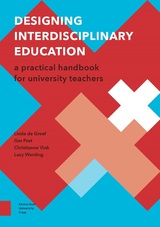
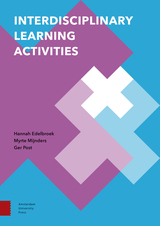

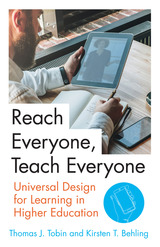
Advocates for the rights of people with disabilities have worked hard to make universal design in the built environment “just part of what we do.” We no longer see curb cuts, for instance, as accommodations for people with disabilities, but perceive their usefulness every time we ride our bikes or push our strollers through crosswalks.
This is also a perfect model for Universal Design for Learning (UDL), a framework grounded in the neuroscience of why, what, and how people learn. Tobin and Behling show that, although it is often associated with students with disabilities, UDL can be profitably broadened toward a larger ease-of-use and general diversity framework. Captioned instructional videos, for example, benefit learners with hearing impairments but also the student who worries about waking her young children at night or those studying on a noisy team bus.
Reach Everyone, Teach Everyone is aimed at faculty members, faculty-service staff, disability support providers, student-service staff, campus leaders, and graduate students who want to strengthen the engagement, interaction, and performance of all college students. It includes resources for readers who want to become UDL experts and advocates: real-world case studies, active-learning techniques, UDL coaching skills, micro- and macro-level UDL-adoption guidance, and use-them-now resources.

In The Second Conversation, university professor Ziva R. Hassenfeld returns to the middle school classroom to study her own seventh grade Bible class. The book explores dilemmas of practice she encountered around interpretive authority in the classroom. She analyzes the questions that came up in her teaching within the context of the most influential religious education scholarship, literacy scholarship, sociocultural theory and literary theory. She highlights the importance of two conversations about interpretive rules within the classroom, the first about the text’s meaning, and the second about competing conventions for determining its meaning. Instructors of any type of literature will benefit from Hassenfeld’s study, which offers rich ideas about when and how teachers enforce a classroom’s way of reading or follow a student’s line of inquiry toward more flexible interpretation.
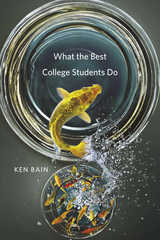
The author of the best-selling What the Best College Teachers Do is back with more humane, doable, and inspiring help, this time for students who want to get the most out of college—and every other educational enterprise, too.
The first thing they should do? Think beyond the transcript. The creative, successful people profiled in this book—college graduates who went on to change the world we live in—aimed higher than straight A’s. They used their four years to cultivate habits of thought that would enable them to grow and adapt throughout their lives.
Combining academic research on learning and motivation with insights drawn from interviews with people who have won Nobel Prizes, Emmys, fame, or the admiration of people in their field, Ken Bain identifies the key attitudes that distinguished the best college students from their peers. These individuals started out with the belief that intelligence and ability are expandable, not fixed. This led them to make connections across disciplines, to develop a “meta-cognitive” understanding of their own ways of thinking, and to find ways to negotiate ill-structured problems rather than simply looking for right answers. Intrinsically motivated by their own sense of purpose, they were not demoralized by failure nor overly impressed with conventional notions of success. These movers and shakers didn’t achieve success by making success their goal. For them, it was a byproduct of following their intellectual curiosity, solving useful problems, and taking risks in order to learn and grow.
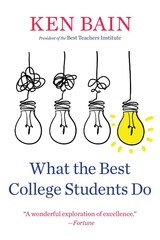
“The ‘best’ students are curious risk-takers who make connections across disciplines. By following those instincts—rather than simply chasing ‘success’—the best students achieved it…A wonderful exploration of excellence.”—Fortune
“Skillfully weaves together some of the best research about effective learning strategies with moving stories about remarkable life-long learners. Some of them had great teachers. But most of them succeed because of what they did for themselves.”—Thomas Luxon, Dartmouth College
“We are always telling students to ‘find their passion.’ Now we have a book that looks at how that happens…Ken Bain can really tell a story…it is very rare for a book based upon research to be such a compelling read.”—José Antonio Bowen, Southern Methodist University
Combining academic research on learning and motivation with insights drawn from interviews with people who have won Nobel Prizes, Emmys, or otherwise led lives of meaning and accomplishment, Ken Bain identifies the key attitudes that distinguish the best college students from their peers. Most start out with a belief that intelligence and ability are expandable, not fixed. This leads them to make connections across disciplines and to find ways of reconceiving problems rather than simply looking for the right answer. Intrinsically motivated by their own sense of purpose, they are not overly impressed with conventional notions of success. The best students study in small bites, focus more on concept than procedure, and work collaboratively, getting friends to test them on their knowledge. They don’t achieve success by making success their goal—when it comes, it is a byproduct of following their intellectual curiosity, solving useful problems, and taking risks to learn and grow.
READERS
Browse our collection.
PUBLISHERS
See BiblioVault's publisher services.
STUDENT SERVICES
Files for college accessibility offices.
UChicago Accessibility Resources
home | accessibility | search | about | contact us
BiblioVault ® 2001 - 2024
The University of Chicago Press









